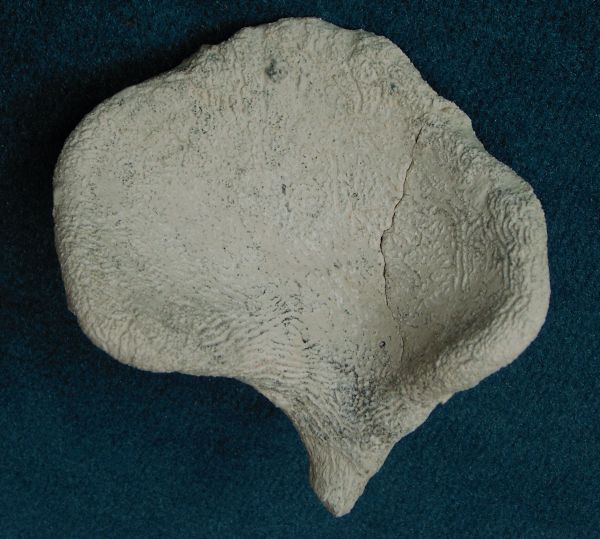
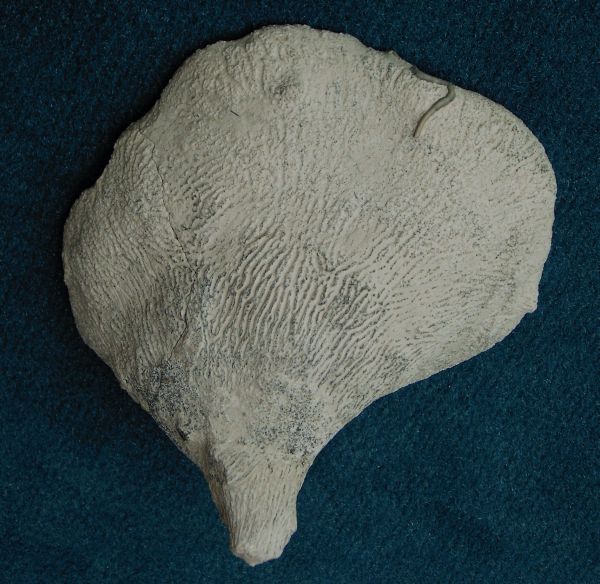
Phymaraphinia infundibuliformis
Schrammen 1901
Phymaraphinia infundibuliformis is a moderately rare species at Misburg.
It may be confused with the more common Rhagadinia rimosa, which is also funnel- or ear-shaped and characterized by a grooved surface. However, the grooves are finer and less criss-crossing in the case of Phymaraphinia infundibuliformis.
The distinction is easy however, if the scleres are considered (see Tables below), which are very conspicuos for all Phymaraphinae. One arm of the tetracladine spicules is reduced to a knob, the other three arms have ring-like swellings near their centers (cf. Cycloclema compressa). The dermal scleres are phyllotriaenes.
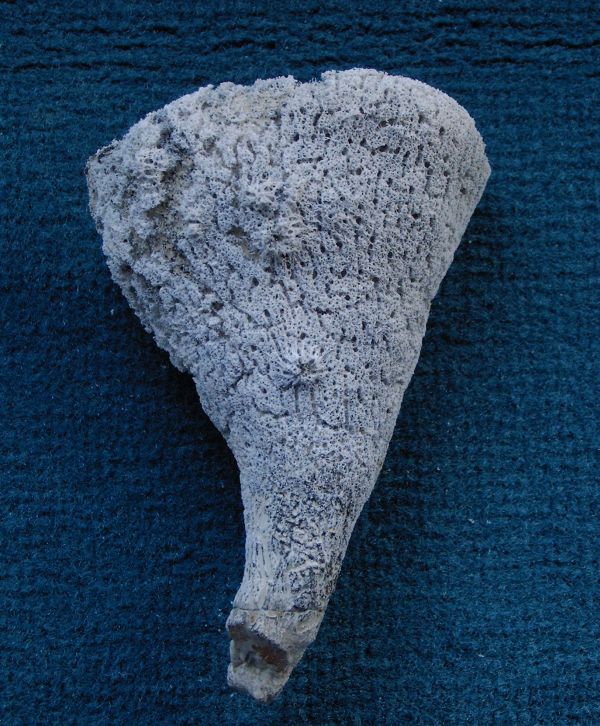
This image shows a heavily etched sample of Phymaraphinia infundibuliformis. Etching reveals the inhalent pores and other details of the canalization, which are not recognizable otherwise.
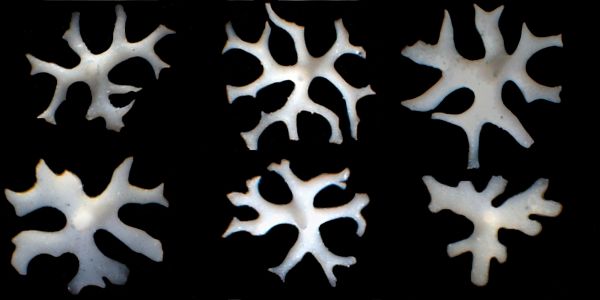
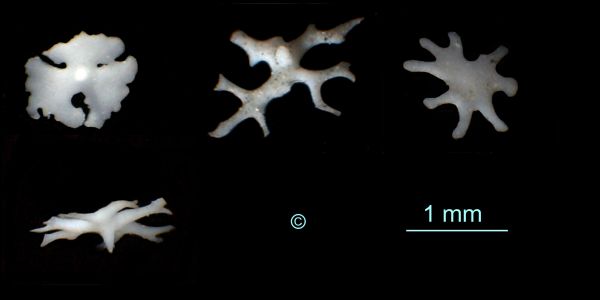
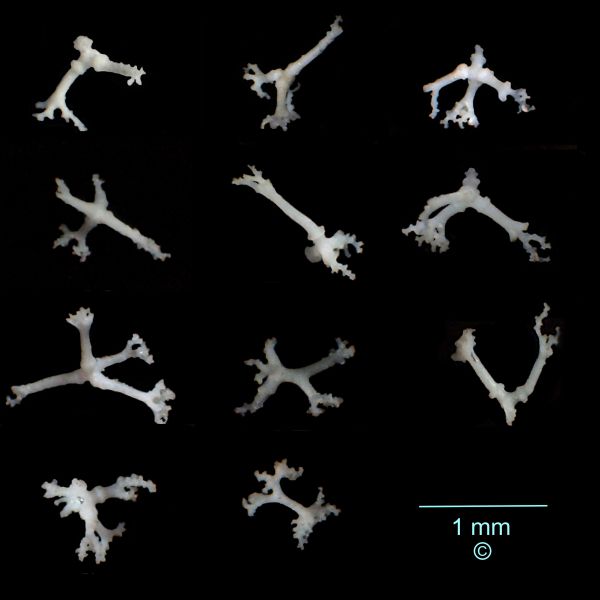
Spicules of Phymaraphinia infundibuliformis (Photomicrographs, reflected light).
The first two plates show a selection of dermal phyllotriaenes, which can become quite large (> 1mm). Typically, the dermal scleres have a short conical rhabdome and their cladomes are deeply incised and multiply forking.
The main skeleton is made up of strongly branching, interfingering tetraclone desmas, which may be strongly distorted. Most, but not all desmas are furnished with a typical ring-shaped swelling around the arms. Moreover, many desmas are not four-armed, but only three-armed, while the fourth ray is reduced to a knob with a short extension.